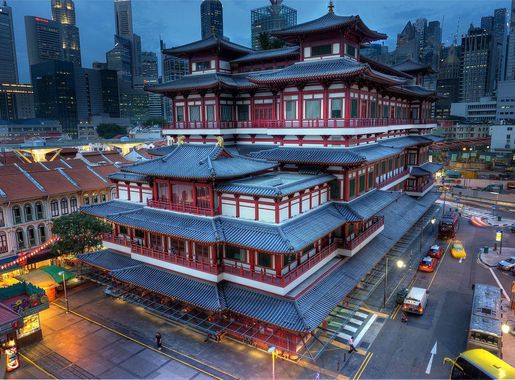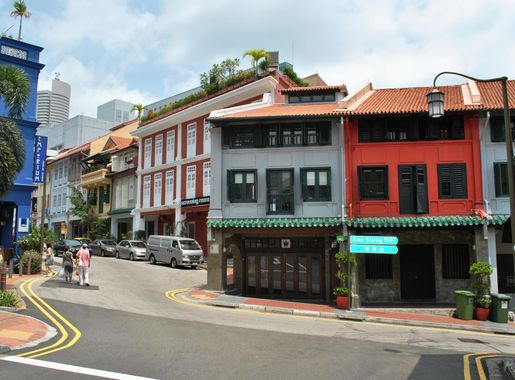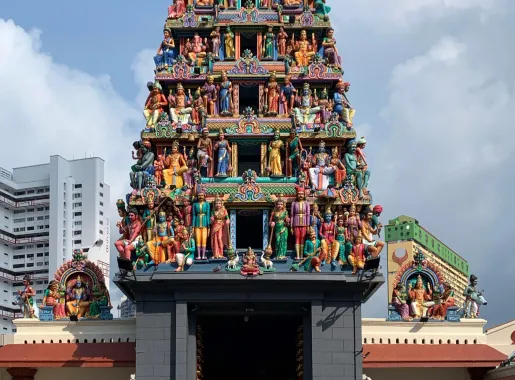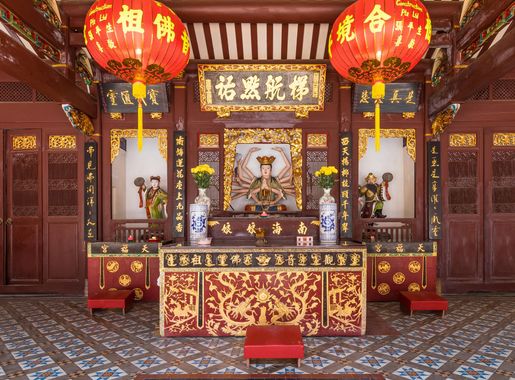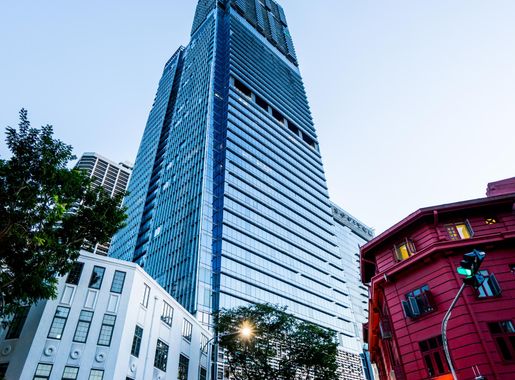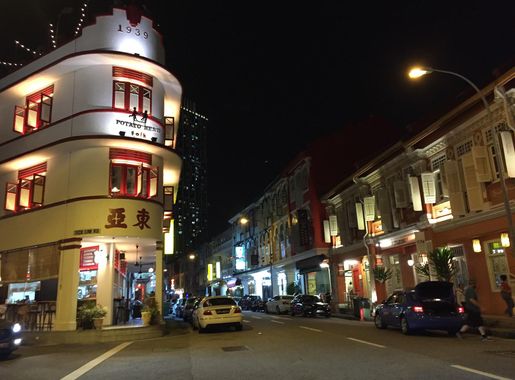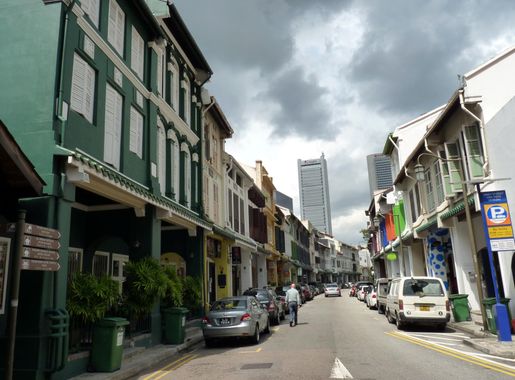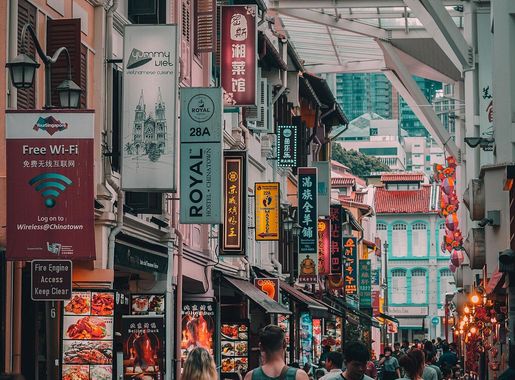
Tanjong Pagar: The Heartbeat of Chinatown, Singapore
Explore Tanjong Pagar in Chinatown, Singapore: A vibrant blend of heritage, culture, and modernity with diverse dining, rich history, and serene green spaces.
Nestled within the bustling district of Chinatown, Tanjong Pagar is a delightful blend of history, culture, and modernity. Its streets are lined with beautifully restored shophouses, offering an array of dining, shopping, and entertainment options. As you stroll through this vibrant neighbourhood, you'll be captivated by the juxtaposition of historic charm and contemporary allure. Tanjong Pagar is also a food lover's paradise. From traditional hawker centres serving local delicacies to chic cafes and fine dining restaurants, there's something to tantalize every palate. Don't miss a visit to the famous Maxwell Food Centre, where you can savour authentic Singaporean dishes like Hainanese chicken rice and laksa. Beyond its culinary delights, Tanjong Pagar is steeped in history. The area is home to several heritage sites, including the Thian Hock Keng Temple, one of the oldest Hokkien temples in Singapore. Wander through the streets and you'll find murals that depict scenes from the neighbourhood's rich past, making it a fascinating place for history buffs. For those seeking a touch of nature, the nearby Tanjong Pagar Park offers a tranquil escape from the urban hustle. It's a perfect spot to relax and enjoy the greenery, or to start a walking tour of the area. With its unique blend of old and new, Tanjong Pagar provides an immersive experience that beautifully captures the essence of Singapore.
Local tips in Tanjong Pagar
- Visit Maxwell Food Centre early to avoid long queues and enjoy freshly prepared local dishes.
- Wear comfortable shoes as you'll be doing a lot of walking to explore the historic streets and sites.
- Don't miss the murals that tell the story of Tanjong Pagar's rich history; they make for great photo opportunities.
- Bring a reusable water bottle to stay hydrated, especially if you're visiting during Singapore's hot and humid months.
- Make time to visit the Thian Hock Keng Temple and soak in its architectural beauty and spiritual atmosphere.
Tanjong Pagar: The Heartbeat of Chinatown, Singapore
Nestled within the bustling district of Chinatown, Tanjong Pagar is a delightful blend of history, culture, and modernity. Its streets are lined with beautifully restored shophouses, offering an array of dining, shopping, and entertainment options. As you stroll through this vibrant neighbourhood, you'll be captivated by the juxtaposition of historic charm and contemporary allure. Tanjong Pagar is also a food lover's paradise. From traditional hawker centres serving local delicacies to chic cafes and fine dining restaurants, there's something to tantalize every palate. Don't miss a visit to the famous Maxwell Food Centre, where you can savour authentic Singaporean dishes like Hainanese chicken rice and laksa. Beyond its culinary delights, Tanjong Pagar is steeped in history. The area is home to several heritage sites, including the Thian Hock Keng Temple, one of the oldest Hokkien temples in Singapore. Wander through the streets and you'll find murals that depict scenes from the neighbourhood's rich past, making it a fascinating place for history buffs. For those seeking a touch of nature, the nearby Tanjong Pagar Park offers a tranquil escape from the urban hustle. It's a perfect spot to relax and enjoy the greenery, or to start a walking tour of the area. With its unique blend of old and new, Tanjong Pagar provides an immersive experience that beautifully captures the essence of Singapore.
Iconic landmarks you can’t miss
Chinatown Heritage Centre
Discover Singapore's rich Chinese heritage at the Chinatown Heritage Centre, a unique museum showcasing the vibrant history and culture of the Chinese community.

Sri Layan Sithi Vinayagar Temple
Discover the vibrant Sri Layan Sithi Vinayagar Temple in Singapore's Chinatown, a cultural landmark celebrating devotion and rich Hindu heritage.
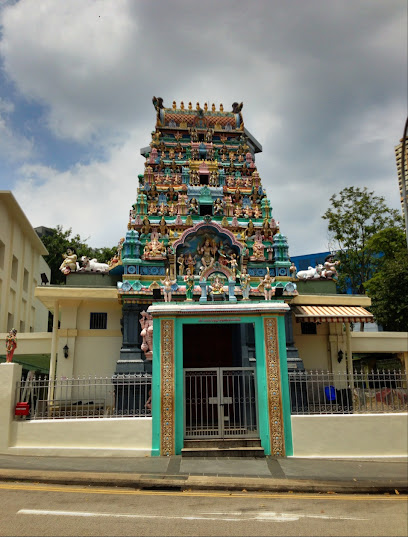
Ann Siang Hill Park
Explore Ann Siang Hill Park, a tranquil oasis in Chinatown, Singapore, where nature meets history in a breathtaking urban setting.
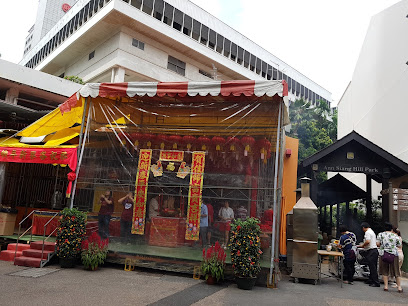
Monument Lifestyle at Duxton Road
Experience modern café culture at Monument Lifestyle in Chinatown, where delectable treats and artisanal coffee meet vibrant city life.
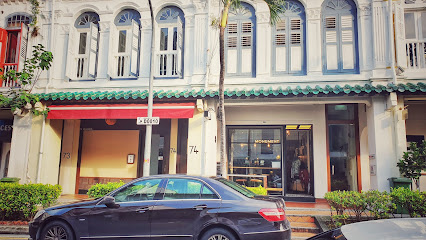
Duxton Plain Park
Discover the serene beauty of Duxton Plain Park, a lush green retreat in the vibrant heart of Chinatown, perfect for relaxation and outdoor activities.
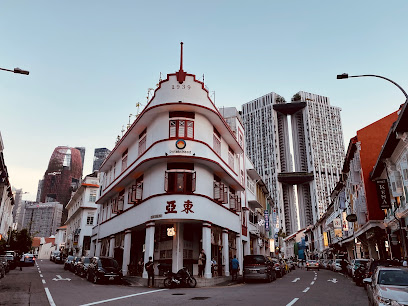
Temple Street @ Chinatown
Discover the lively Temple Street in Chinatown, where delicious street food, vibrant markets, and rich cultural experiences await every traveler.
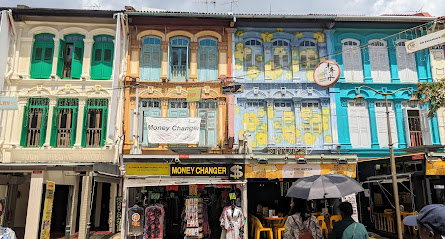
Zhun Ti Gong 準提宫
Discover the tranquility of Zhun Ti Gong, a charming temple in Singapore's Chinatown, where tradition and serenity intertwine.
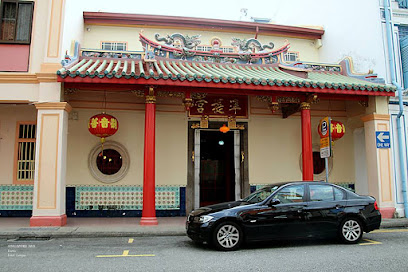
Chinatown Street Arts
Explore the vibrant culture of Singapore at Chinatown Street Arts, where art, tradition, and community come together in a colorful street setting.
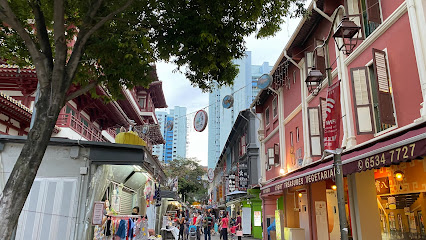
Iron Street Art - Tanjong Pagar
Explore the dynamic street art scene at Iron Street Art in Tanjong Pagar, where vibrant murals bring the urban landscape to life.
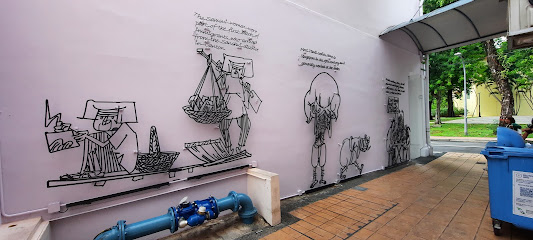
Former Tong Ah Building
Discover the historic charm of the Former Tong Ah Building in Singapore's Chinatown, where heritage meets vibrant city life.

Unmissable attractions to see
Chinatown Singapore
Discover the vibrant culture, delicious cuisine, and rich history of Chinatown Singapore, a must-visit destination for all tourists.
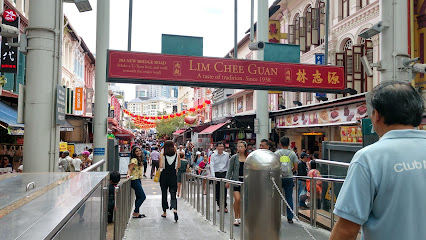
VR WORLD Singapore | Virtual Reality Escape Room | Virtual Reality Arcade
Immerse yourself in thrilling virtual adventures at VR WORLD Singapore, the ultimate destination for gaming and escape room experiences.
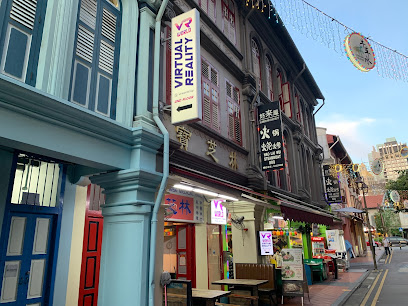
The Pinnacle Sky Garden 50th Storey Skybridge
Experience the breathtaking views and serene greenery of The Pinnacle Sky Garden, Singapore's stunning skybridge above the city skyline.
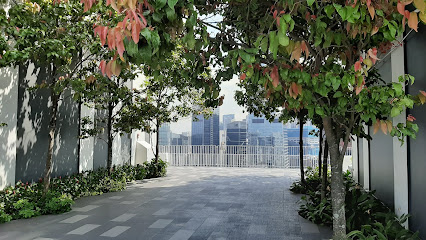
Duxton Plain Park
Explore Duxton Plain Park: A tranquil oasis in Chinatown, blending nature with art in the heart of Singapore.
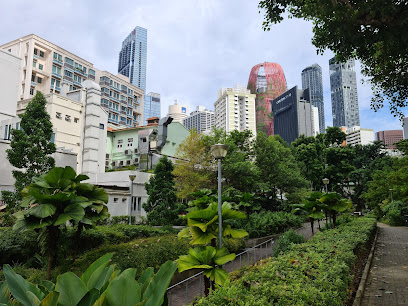
Telok Ayer Green
Explore the tranquil beauty and cultural richness of Telok Ayer Green, a serene park in the heart of Singapore's Chinatown.
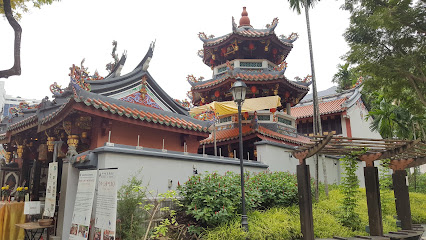
Jinrikisha Station
Discover the charm of Jinrikisha Station, a historical landmark in Singapore's Chinatown that showcases the city’s rich cultural heritage and transportation history.
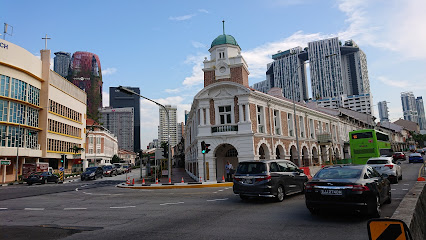
Moo Moo the Cat Portrait (Moo Moo was adopted)
Explore the charming Moo Moo the Cat Portrait in Singapore’s vibrant Chinatown—a delightful blend of art, culture, and feline love.

Vanda Miss Joaquim Park
Explore the serene beauty of Vanda Miss Joaquim Park in Chinatown, a floral sanctuary celebrating Singapore's national flower and natural heritage.
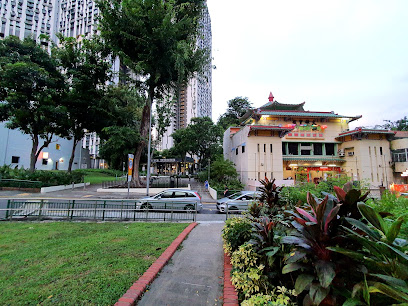
Essential places to dine
Etna Italian Restaurant (Duxton)
Experience authentic Italian cuisine at Etna Italian Restaurant in Tanjong Pagar—home of fresh pasta, gourmet pizzas, and delightful desserts.
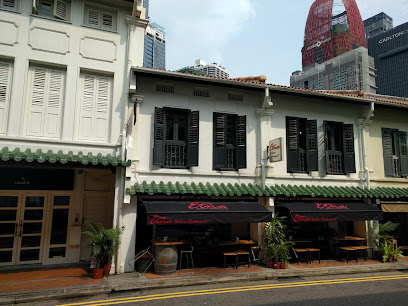
The Blue Ginger (Tanjong Pagar)
Discover authentic Nyonya cuisine at The Blue Ginger in Tanjong Pagar - where tradition meets flavor in every dish.
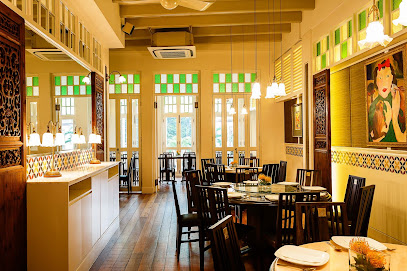
Tippling Club
Discover innovative gastronomy at Tippling Club - Singapore's premier fine dining destination blending creativity with exquisite flavors.
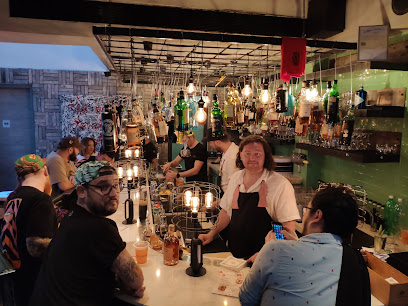
Xiao Ya Tou
Discover the best of Chinese and Asian fusion cuisine at Xiao Ya Tou in Singapore's vibrant Duxton Hill.
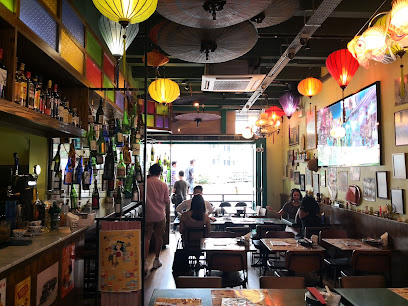
Bar Cicheti
Experience authentic Italian flavors at Bar Cicheti, where handmade pasta and fine wines create unforgettable moments in Singapore's Chinatown.
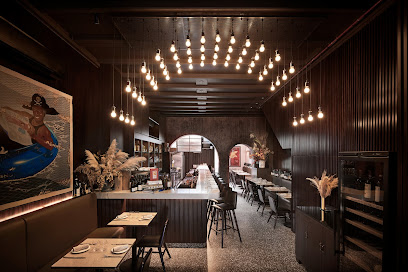
Chef's Table by Chef Stephan
Experience culinary artistry at Chef's Table by Chef Stephan in Chinatown - where innovative dishes meet exceptional service.
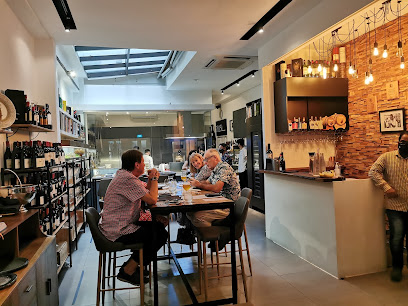
Burma Social
Discover authentic Pan Asian cuisine at Burma Social, where vibrant flavors meet modern dining in Singapore's Chinatown.
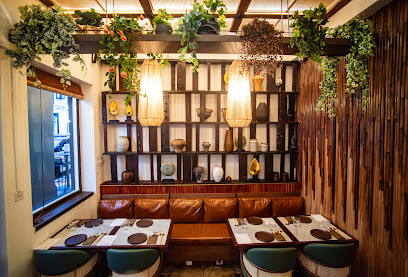
ANJU
Discover ANJU: A Korean Bistro Experience Blending Traditional Flavors with Modern Flair in Singapore's Chinatown.
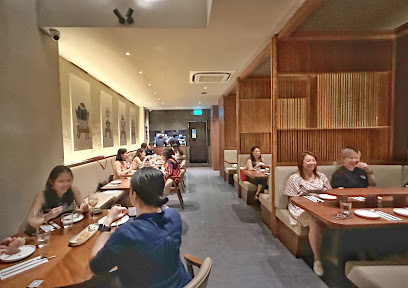
Fleur De Sel Le Restaurant
Experience authentic French cuisine at Fleur De Sel in Singapore's Chinatown - where culinary artistry meets elegant dining.
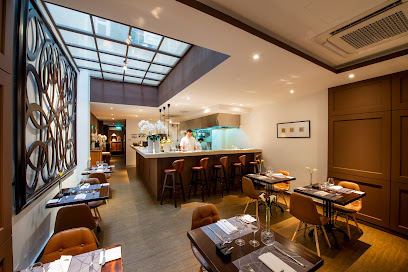
Buko Nero
Experience innovative Italian cuisine at Buko Nero in Singapore's Tanjong Pagar – where tradition meets local flavors.
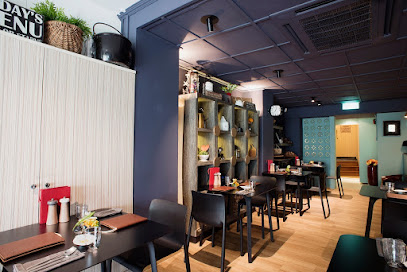
Markets, malls and hidden boutiques
The Tintin Shop
Explore The Tintin Shop in Singapore for exclusive collectibles, gifts, and a nostalgic journey into the world of Tintin.
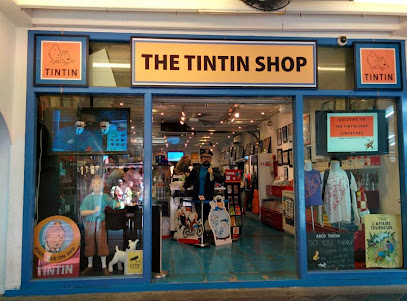
Dustbunny Vintage
Explore the enchanting world of vintage fashion at Dustbunny Vintage in Singapore's bustling Chinatown, where every piece has a story.
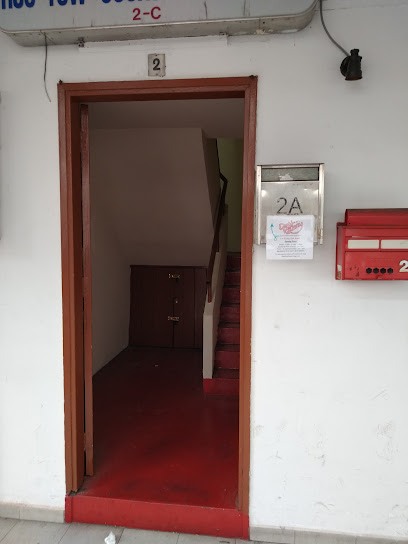
Gemini Body Shop
Explore the vibrant charm of Gemini Body Shop in Chinatown, Singapore, where unique gifts and local crafts await every traveler.

Y&G SG PTE LTD
Explore Y&G SG PTE LTD in Chinatown, Singapore for unique souvenirs and gifts that capture the spirit of your travels.
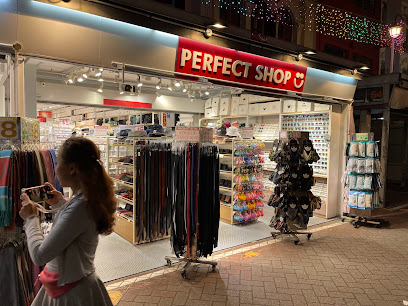
Durio.sg | Premium Lifestyle Novelties Shopping Singapore
Discover the vibrant world of Durio.sg, Singapore's premium gift shop featuring unique novelties, lingerie, and adult entertainment products.

Dollar & More
Explore Dollar & More for unique souvenirs and gifts in the heart of Singapore's vibrant Chinatown, celebrating local culture at every turn.
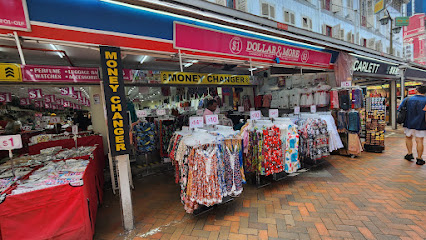
Han Kwang Antique & Porcelain Gallery
Explore the rich heritage of Asia through antique treasures and porcelain artistry at Han Kwang Antique & Porcelain Gallery in Chinatown, Singapore.
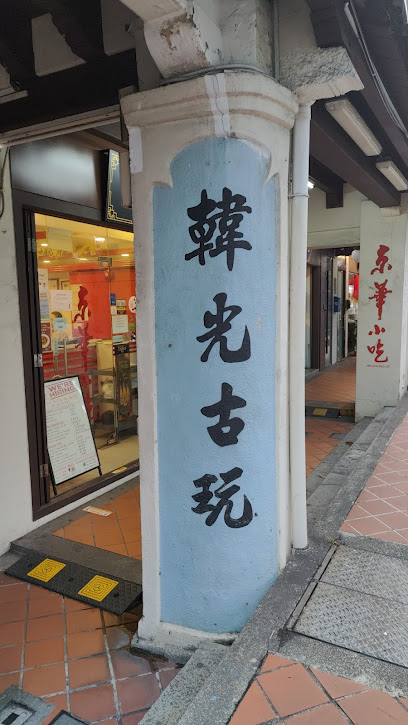
Best City Gifts & Costume Jewellery Pte Ltd
Explore unique souvenirs and exquisite costume jewellery at Best City Gifts & Costume Jewellery in the heart of Singapore's Chinatown.
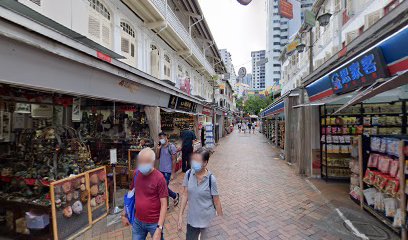
Hermes Aldora International (HAI) Pte. Ltd.
Explore the charm of Singapore at Hermes Aldora International, your go-to gift shop for unique souvenirs and cultural treasures.
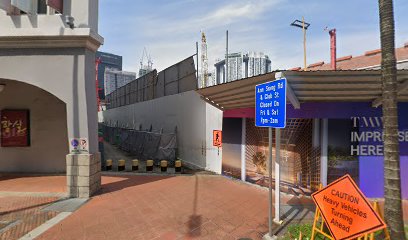
WOW
Explore WOW in Chinatown, Singapore for unique gifts, local crafts, and unforgettable souvenirs that capture the essence of your travels.
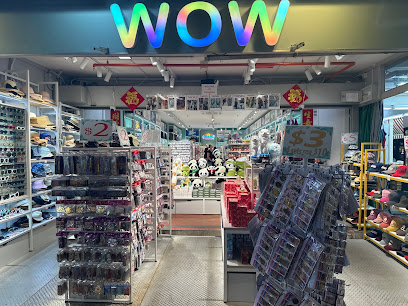
Essential bars & hidden hideouts
Jigger & Pony
Discover Jigger & Pony, a premier bar in Singapore offering innovative cocktails and a vibrant atmosphere that embodies the spirit of the city.
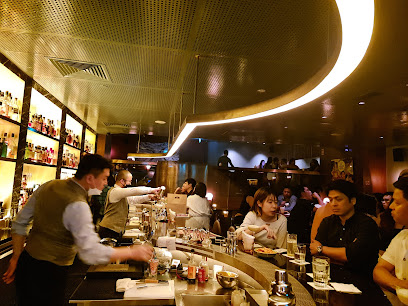
Tippling Club
Discover the innovative cocktails and culinary artistry at Tippling Club, Singapore's premier fine dining bar in Chinatown.
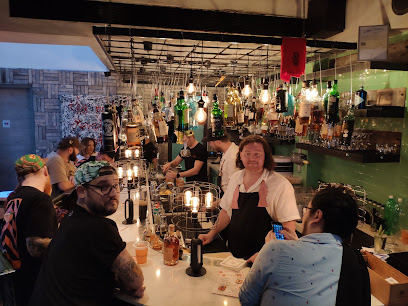
Abriza Rooftop Bar
Discover the ultimate cocktail experience at Abriza Rooftop Bar, where stunning skyline views meet exquisite drinks in Singapore's vibrant Chinatown.
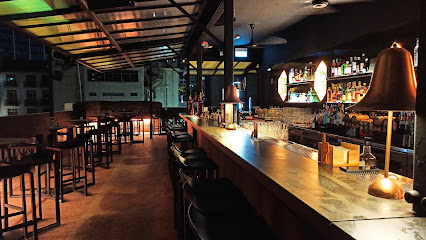
Gibson Bar
Discover the vibrant cocktail culture at Gibson Bar, an exquisite haven in Singapore's Chinatown, where creativity meets elegance in every sip.
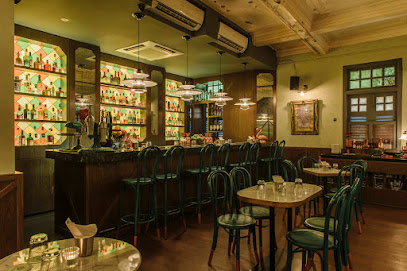
The Elephant Room Singapore
Discover The Elephant Room, a cocktail bar in Singapore offering innovative drinks and a cozy atmosphere in the heart of Chinatown.
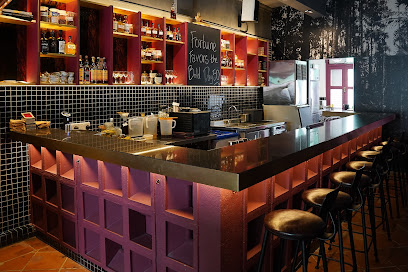
No Sleep Club
Experience the vibrant blend of cocktails and coffee at No Sleep Club in Singapore's Chinatown, the perfect spot for relaxation and socializing.
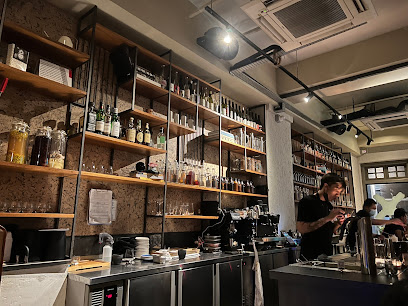
Set of Six
Discover the vibrant atmosphere and innovative cocktails at Set of Six, a must-visit cocktail bar in Singapore's Chinatown.
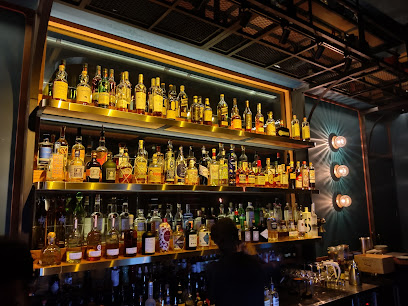
Spectre
Discover the charm of Spectre in Chinatown, where innovative cocktails and an engaging atmosphere create a memorable nightlife experience.
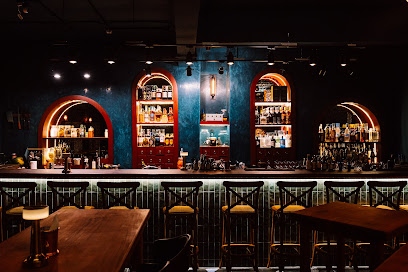
The Joint
Experience the vibrant nightlife of Singapore at The Joint, a stylish bar and restaurant in Chinatown offering creative cocktails and delicious cuisine.
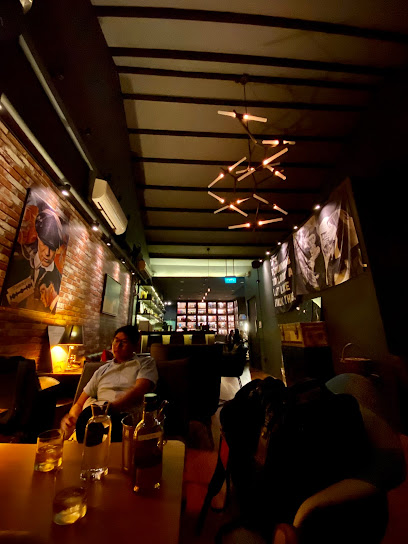
S'pinoy Pub & Wine Bar
Experience the vibrant culture of the Philippines at S'pinoy Pub & Wine Bar in Singapore's Chinatown, where flavors and fun come together.
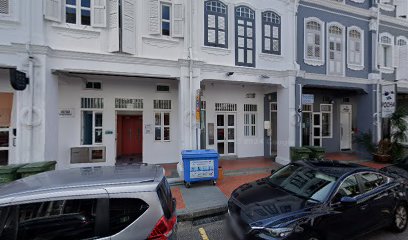
Local Phrases
-
- Hello你好
[Nǐ hǎo] - Goodbye再见
[Zàijiàn] - Yes是
[Shì] - No不
[Bù] - Please/You're welcome请
[Qǐng] - Thank you谢谢
[Xièxiè] - Excuse me/Sorry对不起
[Duìbuqǐ] - How are you?你好吗?
[Nǐ hǎo ma?] - Fine. And you?很好。你呢?
[Hěn hǎo. Nǐ ne?] - Do you speak English?你会说英语吗?
[Nǐ huì shuō yīngyǔ ma?] - I don't understand我不懂
[Wǒ bù dǒng]
- Hello你好
-
- I'd like to see the menu, please请给我菜单
[Qǐng gěi wǒ càidān] - I don't eat meat我不吃肉
[Wǒ bù chī ròu] - Cheers!干杯!
[Gānbēi!] - I would like to pay, please请给我付款
[Qǐng gěi wǒ fùkuǎn]
- I'd like to see the menu, please请给我菜单
-
- Help!救命!
[Jiùmìng!] - Go away!走开!
[Zǒu kāi!] - Call the Police!叫警察!
[Jiào jǐngchá!] - Call a doctor!叫医生!
[Jiào yīshēng!] - I'm lost我迷路了
[Wǒ mílùle] - I'm ill我生病了
[Wǒ shēngbìngle]
- Help!救命!
-
- I'd like to buy...我想买...
[Wǒ xiǎng mǎi...] - I'm just looking我只是看看
[Wǒ zhǐshì kàn kàn] - How much is it?这个多少钱?
[Zhège duōshǎo qián?] - That's too expensive太贵了
[Tài guìle] - Can you lower the price?可以便宜点吗?
[Kěyǐ piányi diǎn ma?]
- I'd like to buy...我想买...
-
- What time is it?现在几点了?
[Xiànzài jǐ diǎnle?] - It's one o'clock现在一点
[Xiànzài yīdiǎn] - Half past (10)十点半
[Shí diǎn bàn] - Morning早上
[Zǎoshang] - Afternoon下午
[Xiàwǔ] - Evening晚上
[Wǎnshang] - Yesterday昨天
[Zuótiān] - Today今天
[Jīntiān] - Tomorrow明天
[Míngtiān] - 1一
[Yī] - 2二
[Èr] - 3三
[Sān] - 4四
[Sì] - 5五
[Wǔ] - 6六
[Liù] - 7七
[Qī] - 8八
[Bā] - 9九
[Jiǔ] - 10十
[Shí]
- What time is it?现在几点了?
-
- Where's a/the...?...在哪里?
[...Zài nǎlǐ?] - What's the address?地址是什么?
[Dìzhǐ shì shénme?] - Can you show me (on the map)?可以给我看地图吗?
[Kěyǐ gěi wǒ kàn dìtú ma?] - When's the next (bus)?下一班(公共汽车)是什么时候?
[Xià yī bān (gōnggòng qìchē) shì shénme shíhòu?] - A ticket (to ....)一张票(到...)
[Yī zhāng piào (dào...)]
- Where's a/the...?...在哪里?
History of Tanjong Pagar
-
Tanjong Pagar, located within the larger Chinatown district, was established in the early 19th century as part of Singapore's colonial expansion. The area was initially a fishing village and a port, where traders would dock their boats, making it a vital hub for commerce and transportation. The name 'Tanjong Pagar' translates to 'cape of the fence', referring to the wooden fence that was built to protect the area.
-
Throughout the 19th century, Tanjong Pagar became a melting pot of cultures, particularly for Chinese immigrants who arrived seeking better economic opportunities. The area is characterized by its rich tapestry of cultures, which include Malay, Indian, and Eurasian influences. This diversity is reflected in the architecture, cuisine, and festivals celebrated within the neighbourhood.
-
In 1859, the Hokkien clan established the Hokkien Huay Kuan, one of the earliest clan associations in Singapore, in Tanjong Pagar. This association played a significant role in supporting the local Hokkien community, providing financial assistance, social services, and a sense of belonging. The building still stands today and is a testament to the historical significance of clan associations in the area.
-
During World War II, Tanjong Pagar was significantly affected by the Japanese occupation of Singapore from 1942 to 1945. The area witnessed various wartime activities, including the establishment of military installations. Post-war, Tanjong Pagar saw rapid redevelopment, with many buildings being reconstructed or repurposed to accommodate the growing population and economic activity.
-
In recent decades, Tanjong Pagar has undergone substantial urban renewal while preserving its historical architecture. The area features a blend of heritage shophouses and modern skyscrapers, showcasing Singapore's commitment to balancing development with cultural preservation. Initiatives like the Tanjong Pagar Conservation Area reflect the neighbourhood's historical significance within the broader context of Chinatown and Singapore's multicultural identity.
Tanjong Pagar Essentials
-
Tanjong Pagar is conveniently located in Chinatown and is easily accessible from neighboring areas. From Chinatown MRT Station, take the East West Line towards Pasir Ris and alight at Tanjong Pagar MRT Station. Alternatively, you can walk from Chinatown, which takes around 15 minutes. Buses also service the area, with several routes connecting Tanjong Pagar to other parts of the city.
-
Tanjong Pagar is well-served by public transport. The MRT station offers easy access, while buses run frequently throughout the area. For a more leisurely experience, consider renting a bicycle from one of the bike-sharing services available in Singapore. Walking is also a great way to explore the charming streets and historical buildings of Tanjong Pagar.
-
Tanjong Pagar is generally a safe neighborhood for tourists, with low crime rates. However, as in any urban area, it is advisable to remain vigilant, especially in crowded places. Specific areas with occasional petty crimes include poorly lit side streets. Keep personal belongings secure and avoid displaying valuables excessively.
-
In the event of an emergency, dial 999 for police assistance or 995 for medical emergencies. Tanjong Pagar has several hospitals and clinics nearby. It is advisable to have travel insurance that covers medical emergencies and to familiarize yourself with the location of the nearest medical facilities.
-
Fashion: Do wear comfortable clothing suitable for warm weather. Avoid overly revealing outfits, especially when visiting places of worship. Religion: Do respect local customs; remove your shoes when entering temples. Public Transport: Do offer your seat to the elderly or disabled. Don't eat or drink on public transport. Greetings: Do greet locals with a polite nod or handshake. Don't engage in overly loud conversations in public. Eating & Drinking: Do try local food; it's a big part of the culture. Don't waste food, as it is considered disrespectful.
-
To experience Tanjong Pagar like a local, visit the vibrant hawker centers for authentic local cuisine. Engage with the friendly vendors and try dishes like Hainanese chicken rice and laksa. Explore the back alleys and heritage buildings for a glimpse of the area's rich history. Don't miss the Tanjong Pagar Railway Station, which is an iconic landmark. Join local festivals if your visit coincides with celebrations, to immerse yourself in the community's culture.
Nearby Cities to Tanjong Pagar
-
Things To Do in Clarke Quay
-
Things To Do in Marina Bay
-
Things To Do in Bugis
-
Things To Do in Sentosa
-
Things To Do in Little India
-
Things To Do in Orchard Road
-
Things To Do in Bukit Timah
-
Things To Do in East Coast Park
-
Things To Do in Singapore
-
Things To Do in Tampines
-
Things To Do in Yishun
-
Things To Do in Jurong
-
Things To Do in Sembawang
-
Things To Do in Johor Bahru
-
Things To Do in Malacca

